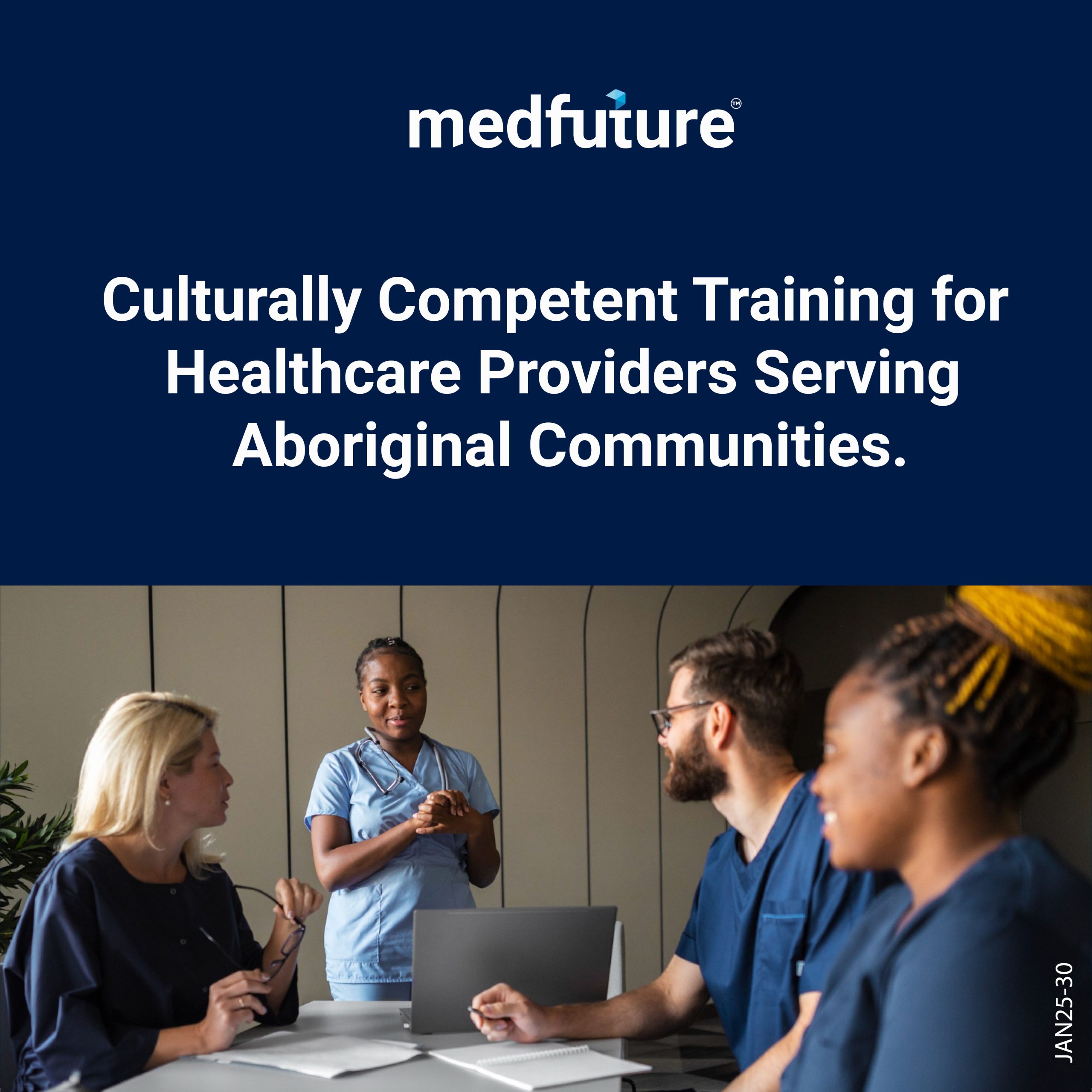In the diverse landscape of healthcare, the importance of cultural competence cannot be overstated. This is particularly true when providing care to Indigenous populations, such as Aboriginal communities. Cultural competence goes beyond language barriers and medical knowledge. It involves understanding and respecting the unique cultural, historical, and social contexts. These shape the health beliefs and practices of Aboriginal peoples.
This article aims to explore the significance of culturally competent training for healthcare providers who serve Aboriginal communities. The article will shed light on the systemic challenges faced by Indigenous individuals and communities. It is by delving into the historical context of healthcare disparities. Moreover, it will emphasise the crucial role that healthcare professionals play in bridging the existing gaps in care through culturally sensitive practices.
Key Areas Healthcare practitioners should consider
When treating Aboriginal patients in Australia, healthcare practitioners should be mindful of several key points. This is to ensure culturally competent and respectful care. Here are some considerations:
Cultural Awareness and Sensitivity:
Diverse Cultures: Recognise that Aboriginal communities are diverse, with distinct languages, customs, and practices. Avoid making assumptions about a patient’s background and be open to learning about their specific cultural context.
Communication:
Language Barriers: Be aware that English may not be the first language for some Aboriginal individuals. Ensure effective communication by using interpreters if needed and being patient and clear in your communication.
Holistic Approach to Health:
Spiritual and Cultural Considerations: Acknowledge the importance of spiritual and cultural beliefs in the health and well-being of Aboriginal patients. Be open to discussions about traditional healing practices and incorporate them into the overall healthcare plan when appropriate.
Understanding Social Determinants of Health:
Historical Trauma: Recognise the historical trauma and ongoing impact of colonisation on Aboriginal communities. Consider the social determinants of health, such as socioeconomic factors, housing, and access to education, that may influence a patient’s well-being.
Informed Consent:
Cultural Protocols: Respect cultural protocols when seeking informed consent. This may involve consulting with community elders or involving the patient’s family in the decision-making process.
Building Trust:
Establishing Rapport: Take the time to build trust and rapport with Aboriginal patients. This may involve active listening, showing respect for their cultural identity, and involving them in their care decisions.
Cultural Competence Training:
Ongoing Education: Healthcare practitioners should engage in ongoing cultural competence training to enhance their understanding of Aboriginal cultures and histories. This can help bridge the gap between Western healthcare practices and the cultural needs of Aboriginal patients.
Cultural Safety:
Creating a Safe Environment: Foster a culturally safe environment where Aboriginal patients feel comfortable expressing their needs and concerns without fear of discrimination. This includes acknowledging and addressing any unconscious biases.
Access to Healthcare Services:
Geographical Barriers: Recognise the geographical challenges that some Aboriginal individuals may face in accessing healthcare services. Explore telehealth options and community-based healthcare initiatives to improve accessibility.
Collaboration with Aboriginal Health Workers:
Involving Indigenous Healthcare Professionals: Collaborate with Aboriginal Health Workers and other Indigenous healthcare professionals who can provide cultural insights and assist in delivering culturally appropriate care.
Steps to take to learn
Cultural Competence Training Programmes:
Participate in cultural competence training programmes specifically designed to educate healthcare practitioners about the histories, traditions, and cultural nuances of Aboriginal communities. These programmes may cover topics such as communication styles, family dynamics, and traditional healing practices.
Engage with Aboriginal Community Organisations:
Reach out to local Aboriginal community organisations and leaders. Establishing relationships with these groups can provide valuable insights into the cultural norms, beliefs, and healthcare preferences of the community.
Cultural Immersion Programmes:
Consider participating in cultural immersion programmes that allow healthcare practitioners to spend time within Aboriginal communities. This firsthand experience can deepen their understanding of the community’s values, challenges, and healthcare needs.
Collaborate with Aboriginal Health Workers:
Work closely with Aboriginal Health Workers and other Indigenous healthcare professionals. These individuals often serve as cultural liaisons between healthcare practitioners and Aboriginal patients, offering guidance and bridging cultural gaps.
Read Indigenous Literature and Resources:
Explore literature written by Indigenous authors and reputable resources on Aboriginal history, culture, and health. This can provide valuable perspectives and enhance practitioners’ cultural competence.
Attend Cultural Awareness Workshops:
Attend workshops or seminars focused on cultural awareness and sensitivity. These events may include discussions, presentations, and interactive activities that highlight key cultural touchpoints of Aboriginal communities.
Seek Guidance from Elders:
Where appropriate and welcomed, seek guidance from Aboriginal elders. Elders are often respected community members with deep cultural knowledge and can provide valuable insights into cultural protocols and practices.
Online Courses and Resources:
Take advantage of online courses and resources that focus on Indigenous health and cultural competence. Various online platforms offer modules specifically tailored for healthcare professionals.
Collaborative Learning with Peers:
Engage in peer-to-peer learning by discussing cultural competence with colleagues. Sharing experiences, insights, and resources can contribute to a collective understanding and foster a supportive learning environment.
Continuous Self-Reflection:
Encourage ongoing self-reflection on personal biases and assumptions. Understanding one’s own cultural background and biases is essential for providing culturally sensitive care.
Participate in Cultural Events:
Attend cultural events, festivals, or gatherings organised by Aboriginal communities. These events provide opportunities to observe and engage with cultural practices, traditions, and community members.
Incorporate Cultural Competence into Continuing Education:
Ensure that cultural competence is integrated into continuing education requirements for healthcare practitioners. This can encourage a lifelong commitment to learning about and respecting diverse cultures.
Conclusion
As we navigate the complexities of delivering care to Aboriginal patients, healthcare providers must recognise the diverse cultural tapestry that defines each community. From language and communication preferences to historical trauma and spiritual beliefs, understanding these cultural touchpoints is pivotal in delivering patient-centred care.
Cultural competence training emerges as a critical component in bridging the gap between conventional healthcare practices and the unique needs of Aboriginal communities. By investing time and effort into specialised training programmes, healthcare practitioners can gain knowledge and skills. These are needed to navigate cultural nuances, establish meaningful connections, and tailor care plans that respect the individuality of each patient.






